I made a quick trip to Seattle -- literally there and back in one day on the bus. While I booked the 6:45 pm return trip, I even managed to get everything done in time and came back on the 5 o'clock run. It worked out well, as the weather was just gorgeous in Seattle but overcast and a bit rainy in Vancouver. (I was even able to catch the local bus up to the Seattle Asian Art Museum to catch the Deco Japan exhibit, which was quite nice, but I won't be reviewing that here.)
While I expected to review this a long time ago (sorry about that), there are still three weekends to go if anyone wants to make the Pacific Northwest modernism show (it closes Sept. 7). The overwhelming feeling is that this is SAM's chance to put many* of its Mark Tobey paintings on display at one time. (And nearly all but one make their way into the
catalog.)
Now this isn't quite as overwhelming as the Tobey show at the National Gallery of Art in 1984 (no, I didn't make it to that), but it is probably the next best thing. While many of Tobey's pieces are fairly abstract ones that scale up or down reasonably well, his work from the 1940s is more representational, and it helps to get close to see all the details in Rummage or the many faces in E Pluribus Unum. There's even a tiny white cat in Electric Night that kind of pops out when viewing this painting in person. One thing I learned from the show is that Tobey actually started his move into abstraction independently from (and a bit earlier than) Jackson Pollack.
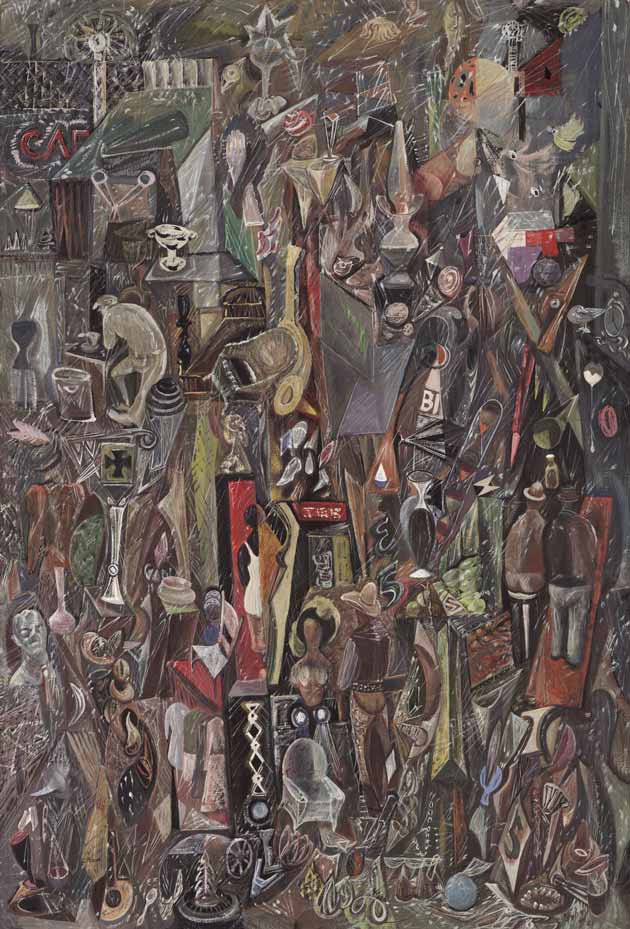 |
| Mark Tobey, Rummage, 1941 |
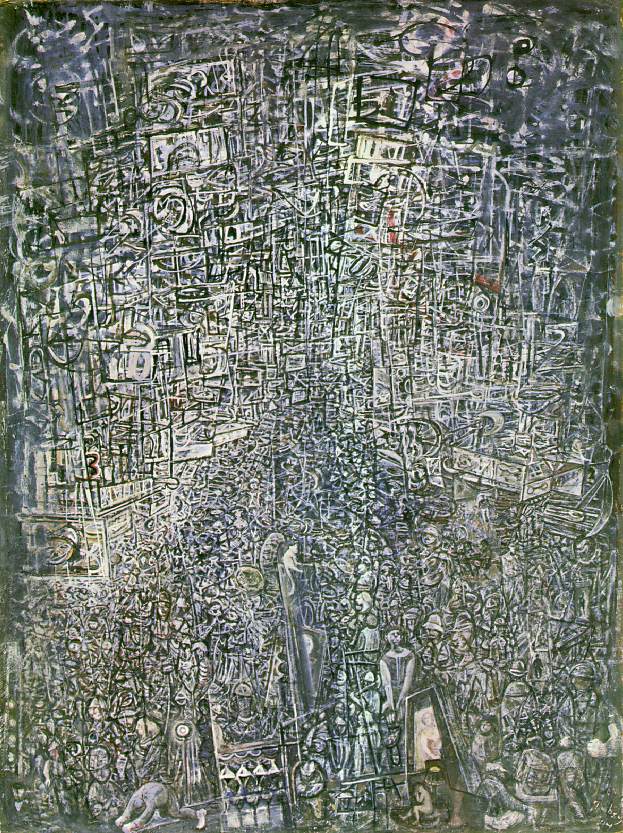 |
| Mark Tobey, Electric Night, 1944 |
I really went for the Tobey, and I wasn't disappointed. In general, I wasn't that interested in Morris Graves, who seems to have the second most paintings in the exhibit, though Dove of the Inner Eye was ok, and I liked The Genesis of Life...
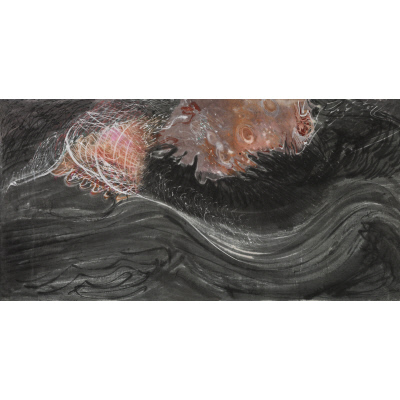 |
| Morris Graves, The Genesis of Life Lay Deep and Anticipant under the Sky II, 1944 |
About mid-way through the exhibit, you encounter Leo Kenney's art, which seems to tackle isolation. His palate is dominated by blues and greys. Most of the paintings have a dominant figure in the middle, but otherwise I found myself somewhat reminded of De Chirico. Lamentation and Third Offering are in the catalog, but Muse III is not, so I will post it below.
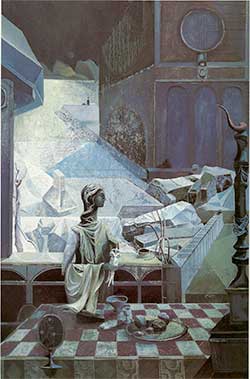 |
| Leo Kenney, Muse III, 1948 |
The last rooms have a wider mix of artists who were a bit younger than Tobey and Graves and in many cases learned from them. Of these, my favorite were Guy Anderson's Search for the Morning and Kenneth Callahan's Riders on the Mountain.
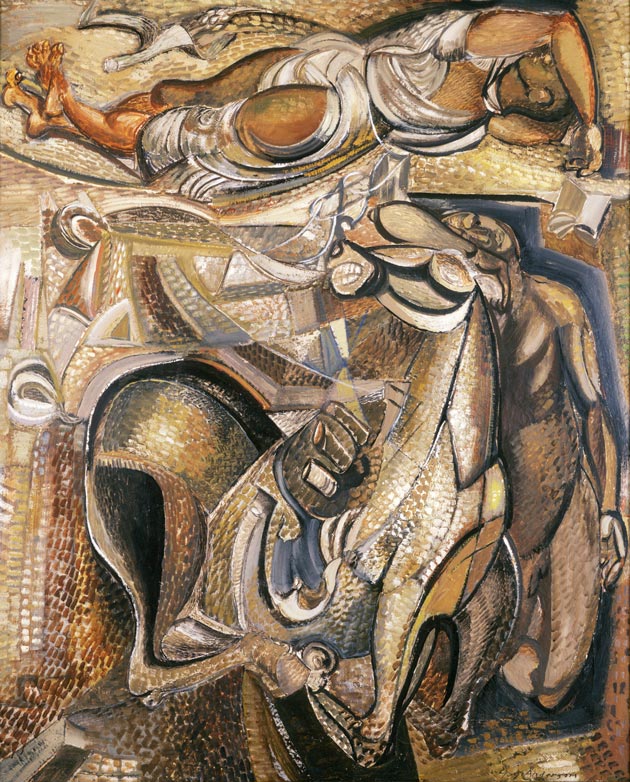 |
| Guy Anderson, Search for the Morning, 1950-52 |
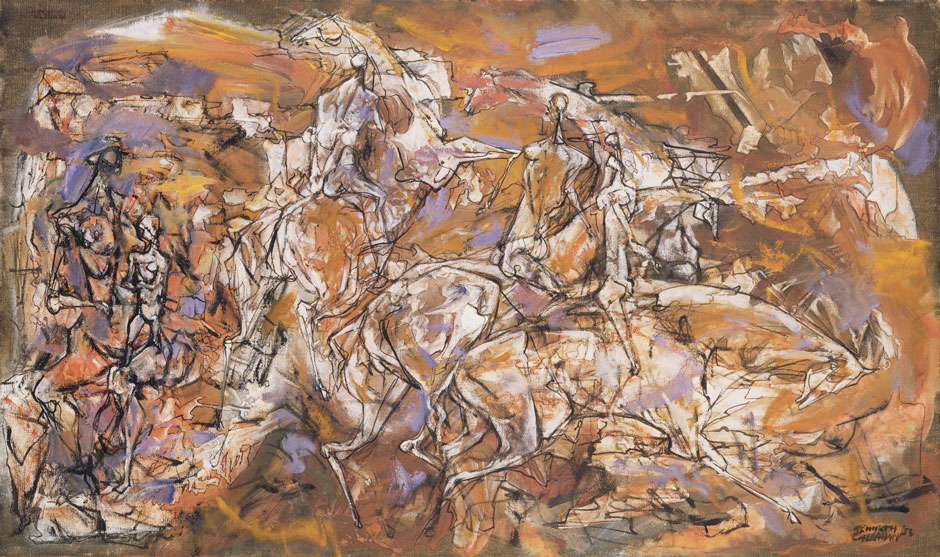 |
| Kenneth Callahan, Riders on the Mountain, 1956 |
So all in all, a solid exhibit that is definitely worth visiting if one is in the region and worth traveling for if one is a major Mark Tobey fan.
* Incredibly, there are probably 10-15 more paintings and prints by Tobey not on display, as these are generally even earlier in his career and are more representational.






No comments:
Post a Comment